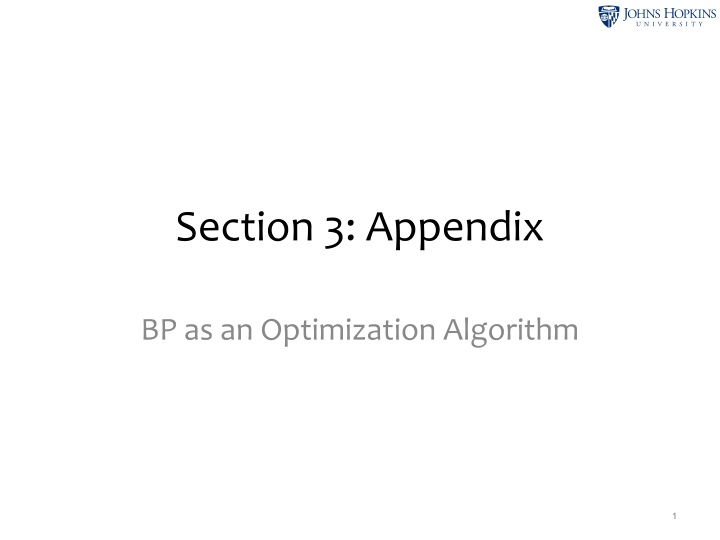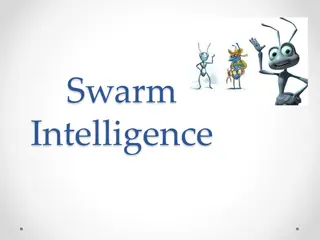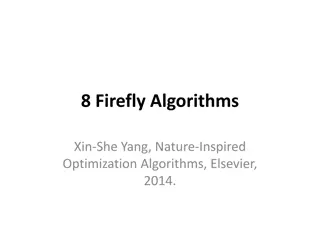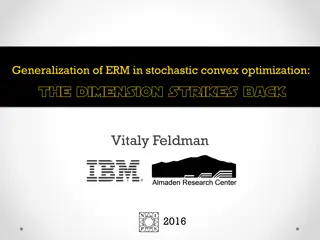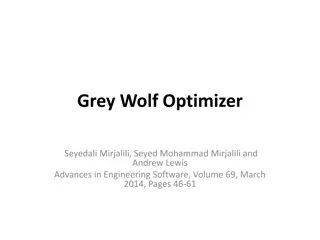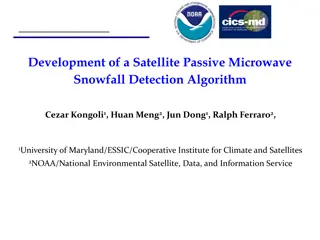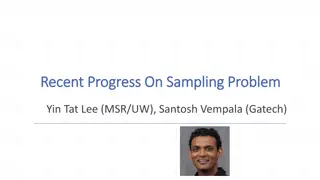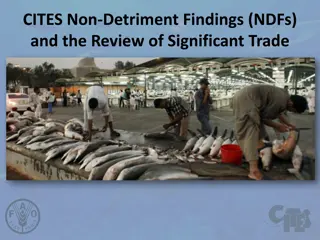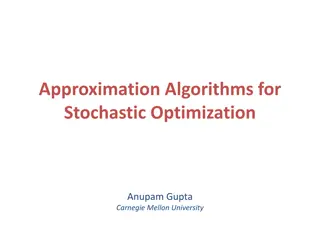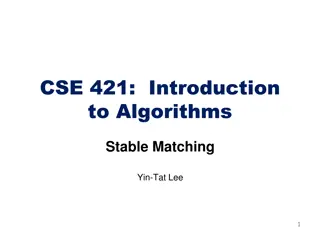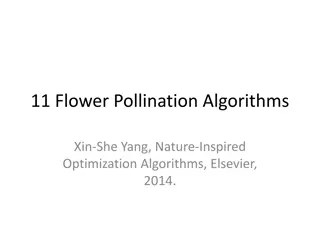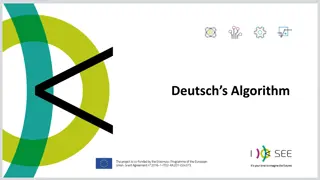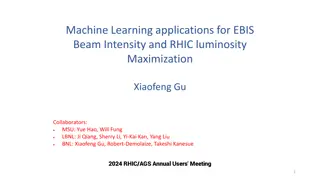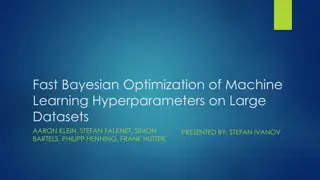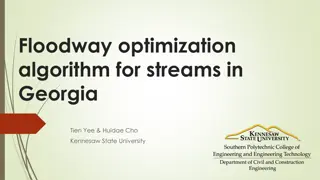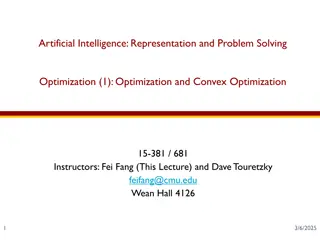Appendix on BP Optimization Algorithm
This appendix delves into the Bethe Free Energy and its relation to KL divergence, Gibbs Free Energy, and the Helmholtz Free Energy in the context of Belief Propagation as an optimization algorithm. It explores the convergence properties of max-product BP and discusses minimizing KL Divergence, distribution optimization, and BP applications on variable chains and acyclic graphs.
Download Presentation

Please find below an Image/Link to download the presentation.
The content on the website is provided AS IS for your information and personal use only. It may not be sold, licensed, or shared on other websites without obtaining consent from the author.If you encounter any issues during the download, it is possible that the publisher has removed the file from their server.
You are allowed to download the files provided on this website for personal or commercial use, subject to the condition that they are used lawfully. All files are the property of their respective owners.
The content on the website is provided AS IS for your information and personal use only. It may not be sold, licensed, or shared on other websites without obtaining consent from the author.
E N D
Presentation Transcript
Section 3: Appendix BP as an Optimization Algorithm 1
BP as an Optimization Algorithm This Appendix provides a more in-depth study of BP as an optimization algorithm. Our focus is on the Bethe Free Energy and its relation to KL divergence, Gibbs Free Energy, and the Helmholtz Free Energy. We also include a discussion of the convergence properties of max-product BP. 2
KL and Free Energies Kullback Leibler (KL) divergence Gibbs Free Energy Helmholtz Free Energy 3
Minimizing KL Divergence If we find the distribution b that minimizes the KL divergence, then b = p Also, true of the minimum of the Gibbs Free Energy But what if b is not (necessarily) a probability distribution? 4
BP on a 2 Variable Chain True distribution: X Y Beliefs at the end of BP: 1 We successfully minimized the KL divergence! *where U(x) is the uniform distribution 5
BP on a 3 Variable Chain True distribution: W X Y 1 2 The true distribution can be expressed in terms of its marginals: Define the joint belief to have the same form: KL decomposes over the marginals 6
BP on a 3 Variable Chain True distribution: W X Y 1 2 The true distribution can be expressed in terms of its marginals: Define the joint belief to have the same form: Gibbs Free Energy decomposes over the marginals 7
BP on an Acyclic Graph X8 True distribution: 12 X7 11 14 X9 X6 13 10 The true distribution can be expressed in terms of its marginals: X3 X5 X1 X2 X4 5 9 1 3 7 like flies time an arrow Define the joint belief to have the same form: KL decomposes over the marginals 8
BP on an Acyclic Graph X8 True distribution: 12 X7 11 14 X9 X6 13 10 The true distribution can be expressed in terms of its marginals: X3 X5 X1 X2 X4 5 9 1 3 7 like flies time an arrow Define the joint belief to have the same form: Gibbs Free Energy decomposes over the marginals 9
BP on a Loopy Graph X8 True distribution: 12 X7 11 14 X9 X6 13 10 Construct the joint belief as before: 6 2 4 8 X3 X5 X1 X2 X4 5 9 1 3 7 like flies time KL is no longer well defined, because the joint belief is not a proper distribution. an arrow This might not be a distribution! So add constraints 1. The beliefs are distributions: are non-negative and sum-to-one. The beliefs are locally consistent: 2. 10
BP on a Loopy Graph X8 True distribution: 12 X7 11 14 X9 X6 13 10 Construct the joint belief as before: 6 2 4 8 X3 X5 X1 X2 X4 5 9 1 3 7 like flies time an arrow But we can still optimize the same objective as before, subject to our belief constraints: This might not be a distribution! So add constraints 1. The beliefs are distributions: are non-negative and sum-to-one. The beliefs are locally consistent: 2. This is called the Bethe Free Energy and decomposes over the marginals 11
BP as an Optimization Algorithm The Bethe Free Energy, a function of the beliefs: BP minimizes a constrained version of the Bethe Free Energy BP is just one local optimization algorithm: fast but not guaranteed to converge If BP converges, the beliefs are called fixed points The stationary points of a function have a gradient of zero The fixed points of BP are local stationary points of the Bethe Free Energy (Yedidia, Freeman, & Weiss, 2000) 12
BP as an Optimization Algorithm The Bethe Free Energy, a function of the beliefs: BP minimizes a constrained version of the Bethe Free Energy BP is just one local optimization algorithm: fast but not guaranteed to converge If BP converges, the beliefs are called fixed points The stationary points of a function have a gradient of zero The stable fixed points of BP are local minima of the Bethe Free Energy (Heskes, 2003) 13
BP as an Optimization Algorithm For graphs with no cycles: The minimizing beliefs = the true marginals BP finds the global minimum of the Bethe Free Energy This global minimum is log Z(the Helmholtz Free Energy ) For graphs with cycles: The minimizing beliefs only approximate the true marginals Attempting to minimize may get stuck at local minimum or other critical point Even the global minimum only approximates log Z 14
Convergence of Sum-product BP The fixed point beliefs: Do not necessarily correspond to marginals of any joint distribution over all the variables (Mackay, Yedidia, Freeman, & Weiss, 2001; Yedidia, Freeman, & Weiss, 2005) Unbelievable probabilities Conversely, the true marginals for many joint distributions cannot be reached by BP (Pitkow, Ahmadian, & Miller, 2011) GBethe(b) b2(x2) b1(x1) The figure shows a two- dimensional slice of the Bethe Free Energy for a binary graphical model with pairwise interactions 15 Figure adapted from (Pitkow, Ahmadian, & Miller, 2011)
Convergence of Max-product BP If the max-marginals bi(xi) are a fixed point of BP, and x* is the corresponding assignment (assumed unique), then p(x*) > p(x) for every x x*in a rather large neighborhood around x* (Weiss & Freeman, 2001). The neighbors of x* are constructed as follows: For any set of vars S of disconnected trees and single loops, set the variables in S to arbitrary values, and the rest to x*. Informally: If you take the fixed-point solution x* and arbitrarily change the values of the dark nodes in the figure, the overall probability of the configuration will decrease. 16 Figure from (Weiss & Freeman, 2001)
Convergence of Max-product BP If the max-marginals bi(xi) are a fixed point of BP, and x* is the corresponding assignment (assumed unique), then p(x*) > p(x) for every x x*in a rather large neighborhood around x* (Weiss & Freeman, 2001). The neighbors of x* are constructed as follows: For any set of vars S of disconnected trees and single loops, set the variables in S to arbitrary values, and the rest to x*. Informally: If you take the fixed-point solution x* and arbitrarily change the values of the dark nodes in the figure, the overall probability of the configuration will decrease. 17 Figure from (Weiss & Freeman, 2001)
Convergence of Max-product BP If the max-marginals bi(xi) are a fixed point of BP, and x* is the corresponding assignment (assumed unique), then p(x*) > p(x) for every x x*in a rather large neighborhood around x* (Weiss & Freeman, 2001). The neighbors of x* are constructed as follows: For any set of vars S of disconnected trees and single loops, set the variables in S to arbitrary values, and the rest to x*. Informally: If you take the fixed-point solution x* and arbitrarily change the values of the dark nodes in the figure, the overall probability of the configuration will decrease. 18 Figure from (Weiss & Freeman, 2001)
